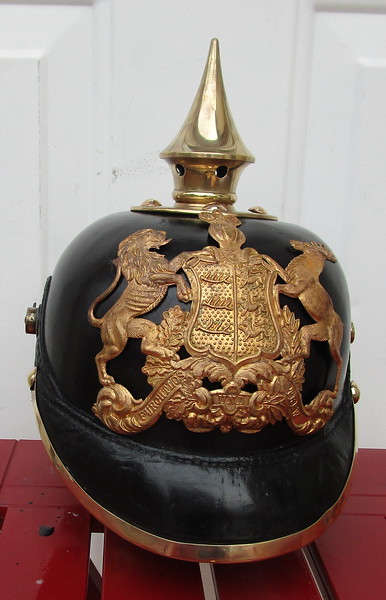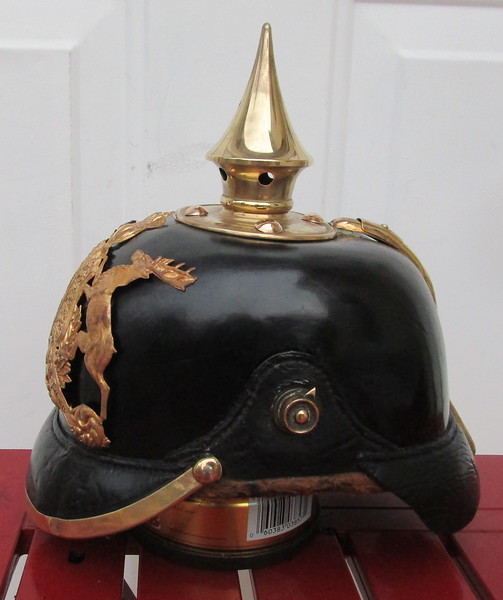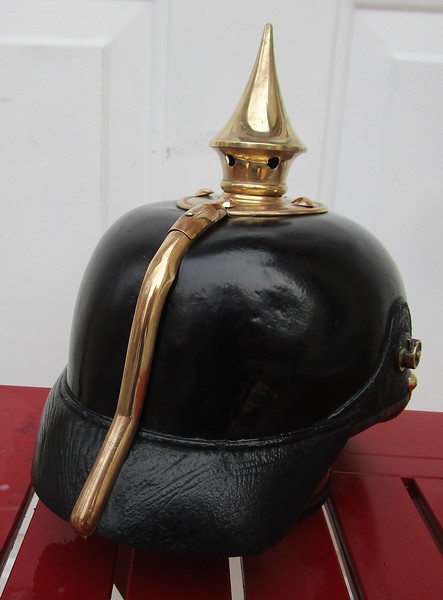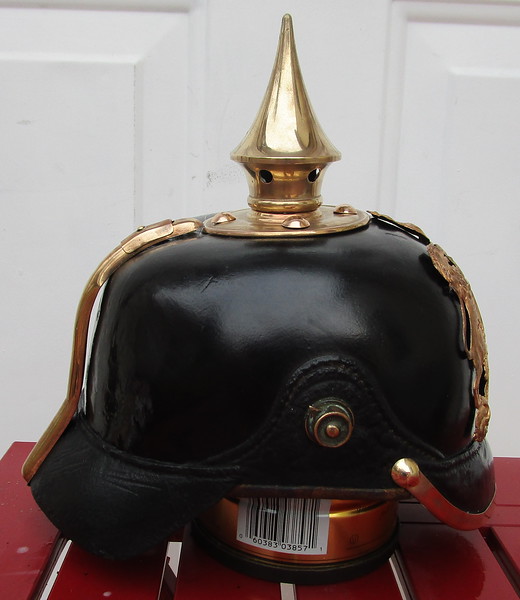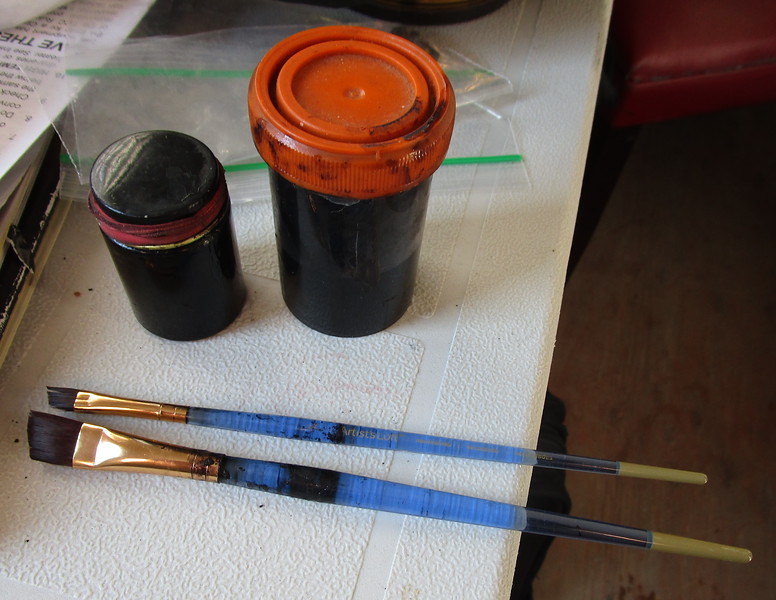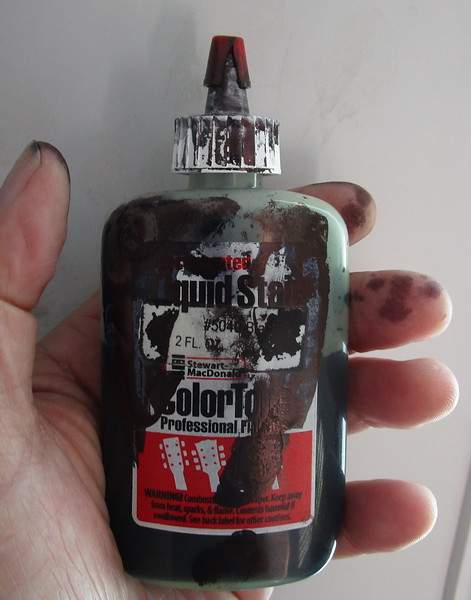Photos of the completed JR 126. Work done...restitch both visors, provide one original trim brad. resolder split brad on spine, clean all fittings, refinish areas of missing lacquer, apply polish to entire helmet to blend in new finish.
This helmet was dried out/shrunk over 100+ years and as a result the brass visor trim was too long when I tried to put it back on. Consequently, approx .25 inches had to be cut off one end of the trim and a new hole drilled for the trim brad. I do not believe in putting extra holes in helmets and I always strive for the restoration to be hidden as much as possible. Thus, cut the trim, drill a new hole and the brad covers the cut end. The side view showing the gap between spine and shell illustrates how much this helmet shrank over the years.
